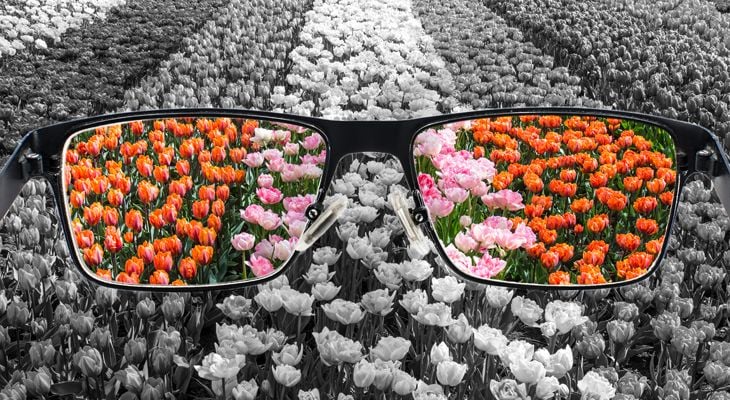
Color blindness, also known as color vision deficiency, occurs when an individual cannot distinguish between certain colors like red and green or, less commonly, blue and yellow.
Cause of Color Blindness
Light-sensitive tissue, the retina, lines the back of the eye and consists of two types of light distinguishing cells: rods and cones. While rods detect or see light and dark, cones are responsible for detecting color and sending the information to the brain for processing. Your eye has three types of cones; one for perceiving red, another for blue, and third for green. In a healthy eye, the cones work together to facilitate your ability to see a broad range of colors. When one or more type of cone functions abnormally, color deficiency occurs.
Color Blindness Symptoms
Depending on which cones are affected, the symptoms of color blindness range from mild to severe. Mild color blindness is defined as difficulty distinguishing colors in low light, and severe color blindness can leave someone seeing only a range of grey tones. Symptoms of color blindness include having difficulty seeing colors or their brightness, and the inability to distinguish between different colors. People with color blindness most frequently have a hard time telling the difference between red and green or blue and yellow.
Risk Factors for Color Blindness
Most individuals with color deficiency are born with it. Congenital color blindness is usually inherited as a genetic trait passed down from mother to son. Males are much more likely than females to inherit color deficiency, experiencing color blindness from birth.
Color blindness, however, can develop as the result of disease, medical conditions, trauma, or as a side effect of medication. Conditions that may lead to color blindness include macular degeneration, glaucoma, Parkinson's disease, Alzheimer's disease, leukemia, sickle cell anemia, and alcoholism. Color blindness which develops later in life as the result of a condition is known as acquired color deficiency.
Diagnosis and Treatment
An eye care professional diagnoses color blindness with a simple test. The patient is shown diagrams comprised of differently colored dots. Color blind individuals will not be able to distinguish shapes or numbers hidden among the dots in a different color.
While there is no cure for congenital color blindness, special lenses for glasses or contacts have been developed to help color deficient individuals distinguish between colors. Acquired color blindness can sometimes be treated by addressing the underlying cause.
